Mont-Tremblant National Park: Hiking Amidst the Laurentians
Nestled in the heart of Quebec, Mont-Tremblant National Park is a sprawling natural sanctuary stretching over 373,000 acres. With a rich history spanning more than 125 years, it holds the distinction of being Quebec’s first park and the sixth park established in North America. Mont-Tremblant National Park not only preserves a significant part of Quebec’s heritage but also safeguards the natural landscape and its diverse wildlife.
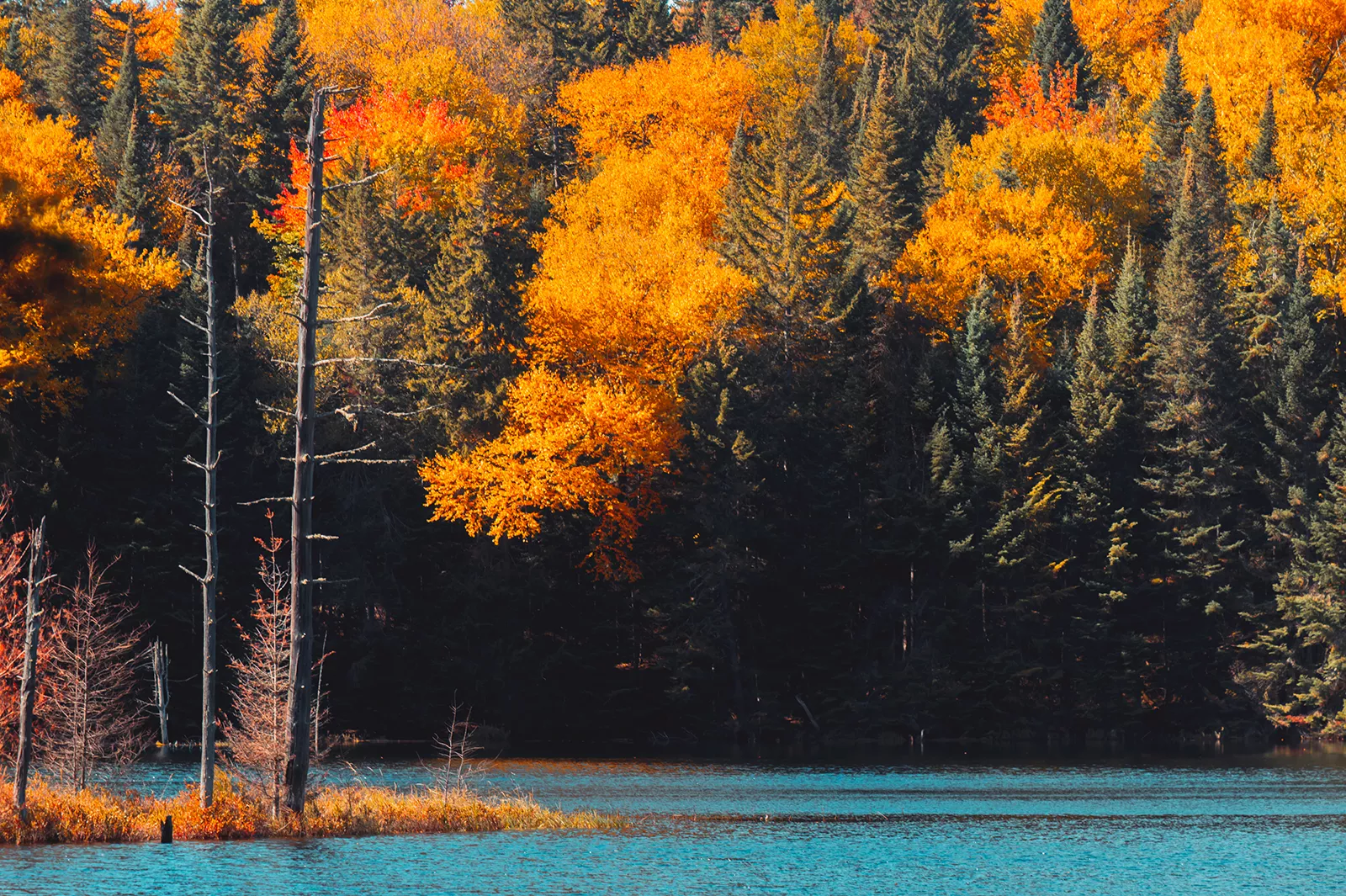
With 400 lakes and six rivers, Mont-Tremblant National Park is a haven for water enthusiasts, particularly during the summer months. The crystal-clear waters beckon visitors to engage in a variety of water sports, including canoeing, kayaking, and paddleboarding. Glide along the tranquil lakes, exploring hidden coves and peaceful inlets that reveal the park’s untouched beauty. Fishing enthusiasts will delight in the abundance of 34 fish species, including pike, trout, and walleye. Cast your line into the shimmering waters, anticipating the thrill of reeling in a prized catch. Private boats are also welcome, offering the opportunity to venture further into the expansive waterways. After a day of aquatic adventures, unwind on the sandy shores of the La Crémaillère and Lac-Provost beaches, basking in the warm sun and relishing the serenity of the surroundings at Mont Tremblant National Park.
Mont-Tremblant National Park exceeded all expectations with its breathtaking landscapes and endless outdoor activities. A true paradise for nature lovers and adventure seekers alike.
Mont-Tremblant National Park also to avid cyclists. With a network of biking trails that wind through Mont-Tremblant National Park, cyclists can indulge in a two-wheeled exploration of this picturesque paradise. Embark on an invigorating ride, pedaling along trails that unveil breathtaking vistas of the surrounding landscapes. Feel the rush of the wind against your face as you navigate through dense forests, cross charming wooden bridges, and discover hidden corners of natural beauty. The biking trails of Mont Tremblant National Park offer a blend of thrilling challenges and tranquil moments, catering to riders of all skill levels.
For those seeking a deeper understanding of Mont-Tremblant National Park’s culture and history, a visit to the Discovery Center in La Diable is highly recommended. Step inside this educational hub at Mont-Tremblant National Park, where interactive exhibits and informative displays transport visitors back in time. Uncover the stories of the indigenous people who once inhabited the land and learn about the Mont-Tremblant National Park’s rich biodiversity. Gain insights into the ongoing conservation efforts and the importance of preserving this natural treasure for future generations. The Discovery Center is a gateway to understanding the park’s heritage and serves as a source of inspiration for visitors to become stewards of the environment.
While summer unveils a plethora of outdoor activities, Mont-Tremblant National Park continues to captivate visitors during the winter season. The park transforms into a winter wonderland, enticing adventurers with its snow-covered landscapes and thrilling winter sports. Strap on your skis or snowshoes and set off on trails that wind through pristine forests blanketed in snow. Mont-Tremblant National Park’s 82 kilometers of trails provide ample opportunities for cross-country skiing and snowshoeing, catering to both beginners and seasoned enthusiasts. Traverse the wintry terrain, marveling at the stillness of the surroundings and the delicate beauty of snow-capped trees. Winter also offers excellent wildlife watching opportunities at Mont-Tremblant National Park, as more than 40 mammal species call the park home. Keep your eyes peeled for sightings of majestic creatures such as wolves, deer, moose, and beavers, as well as a diverse array of bird species that soar through the frosty skies.
Mont-Tremblant National Park offers a range of camping options, allowing visitors to fully immerse themselves in the park’s natural splendor. The campgrounds within the park provide a gateway to unforgettable outdoor experiences. The La Pimbina campground, nestled amidst towering trees, offers spacious tent sites and modern amenities such as washrooms and showers. Set up camp and fall asleep to the gentle rustling of leaves, awakening to the sweet melodies of birds welcoming the new day. The Lac-des-Sables campground, located near the tranquil shores of a picturesque lake, accommodates both tent and RV campers. Enjoy the convenience of facilities while being surrounded by the serenity of nature. These campgrounds, all at Mont-Tremblant National Park, provide a peaceful retreat where you can disconnect from the busyness of everyday life and reconnect with the simplicity and beauty of the natural world.

For those seeking a more immersive and remote camping experience, Mont-Tremblant National Park offers backcountry camping opportunities. Venture into the untamed wilderness, where solitude and tranquility await. Set up camp in secluded areas accessible only by hiking or paddling, and relish the true essence of wilderness living. Backcountry camping permits are required at Mont-Tremblant National Park, ensuring the preservation of these pristine areas and limiting the number of campers for a more intimate experience with nature. Fall asleep under a blanket of stars, surrounded by the symphony of the nocturnal forest, and wake up to the first rays of sunlight dancing through the trees.
Mont-Tremblant National Park is home to a diverse array of plant and animal species, creating a thriving ecosystem that adds to the park’s natural charm. From majestic mammals to vibrant birds and aquatic life, Mont-Tremblant National Park offers a rich tapestry of biodiversity.

Mont-Tremblant National Park’s forests showcase a variety of tree species, including towering conifers such as spruce and fir, as well as hardwoods like maple and birch. These forests create a lush and verdant backdrop, providing shelter and sustenance for the Mont-Tremblant National Park’s wildlife. As you explore the trails, you’ll encounter an assortment of wildflowers, ferns, and mosses that adorn the forest floor, adding splashes of color to the landscape.
Mont-Tremblant National Park is a haven for wildlife enthusiasts. More than 40 mammal species roam the park, offering glimpses of their natural behaviors. Keep your eyes peeled for the iconic gray wolves, majestic moose, agile white-tailed deer, and industrious beavers. Other notable mammals that call Mont-Tremblant National Park home include black bears, red foxes, otters, porcupines, and various small mammals like raccoons and chipmunks. Mont-Tremblant National Park’s diverse habitats provide ample food sources and shelter for these remarkable creatures.
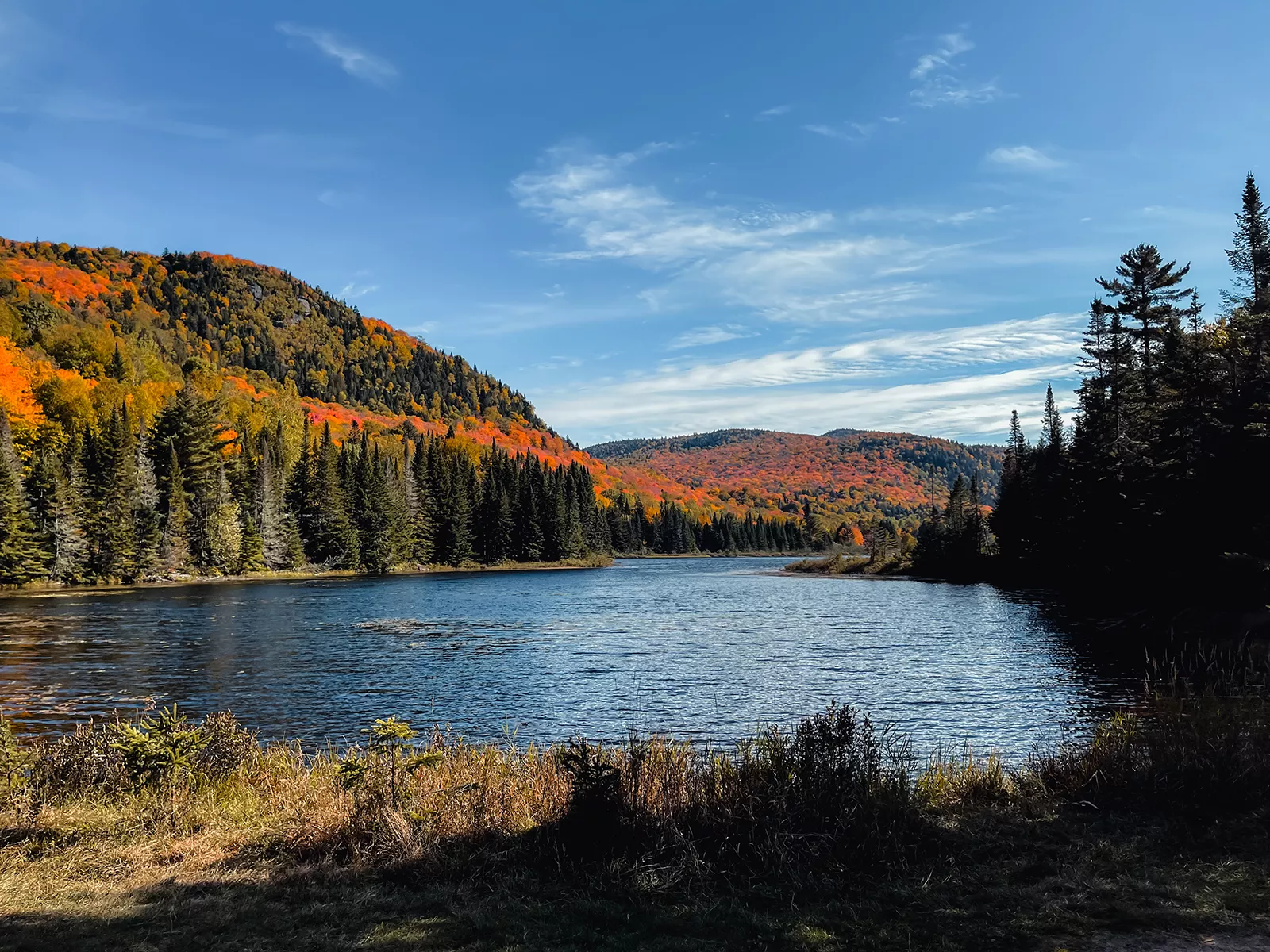
Birdwatchers will be delighted by the avian diversity within Mont-Tremblant National Park. Over 200 species of birds have been spotted in the park, ranging from the regal bald eagle soaring overhead to the melodious songbirds that fill the air with their sweet tunes. Look for the striking blue feathers of the indigo bunting, the vibrant plumage of the American redstart, and the elusive call of the barred owl echoing through the trees. The park’s lakes and rivers attract waterfowl, including ducks, geese, and herons, while the forested areas provide nesting grounds for woodpeckers, warblers, and thrushes.
With its 400 lakes and 6 rivers, Mont-Tremblant National Park teems with aquatic life. These pristine bodies of water support a rich and diverse fish population, making it a paradise for anglers. Cast your line into the lakes and you may reel in northern pike, lake trout, walleye, smallmouth bass, or yellow perch. The park’s rivers are home to brook trout, a prized fish among anglers. These fish species thrive in the clear and cold waters, creating a thriving aquatic ecosystem.
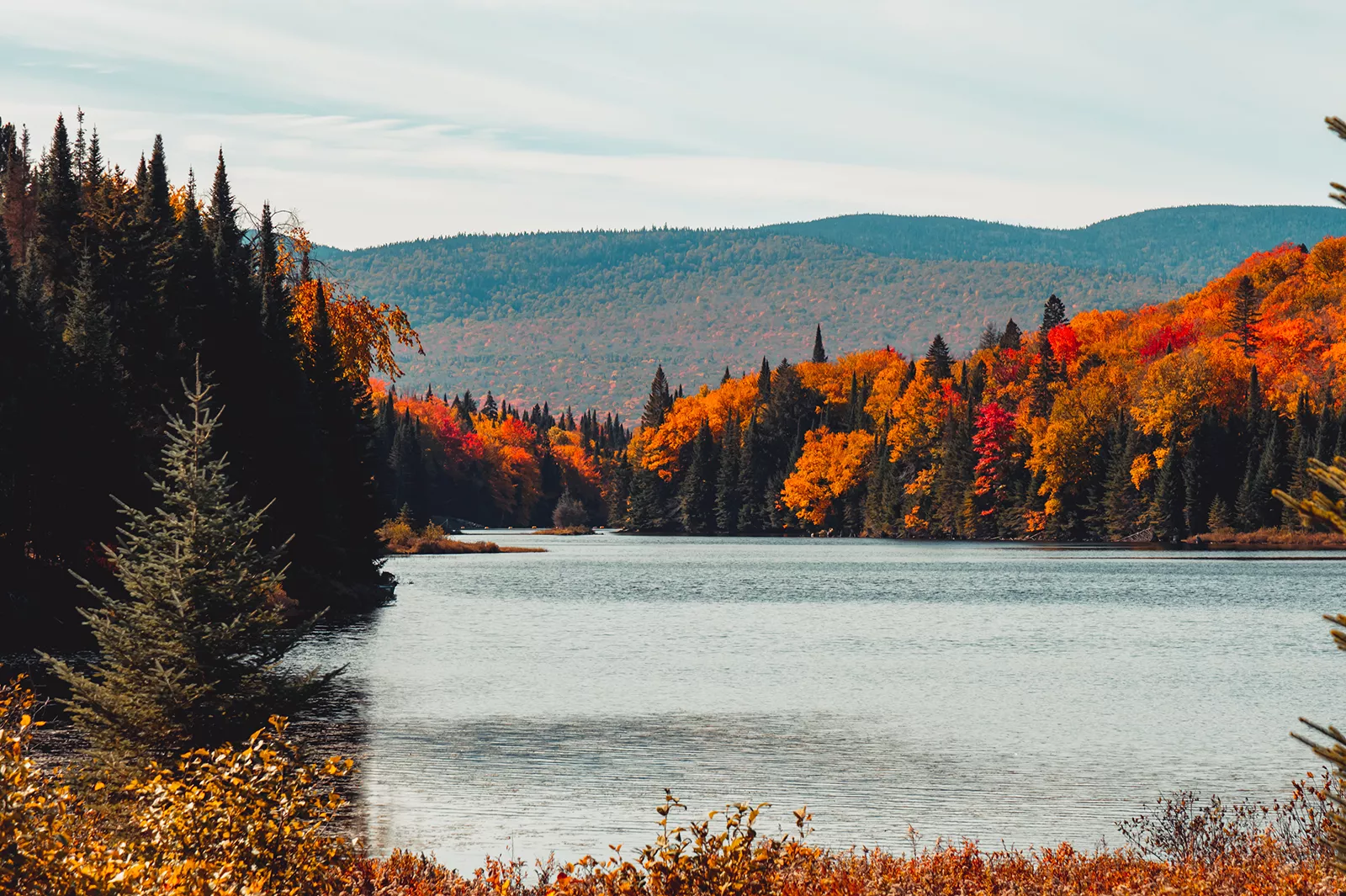
Beyond fish, the lakes and rivers also provide habitats for amphibians such as frogs and salamanders. Be on the lookout for the vibrant red-spotted newt or listen for the chorus of spring peepers during the warmer months.
Mont-Tremblant National Park not only serves as a recreational playground but also plays a vital role in the conservation of these plant and animal species. The park’s protected status ensures the preservation of these habitats, allowing the flora and fauna to thrive undisturbed. Ongoing efforts are in place to monitor and protect Mont-Tremblant National Park’s biodiversity, ensuring the long-term survival of these precious species.
Visitors to Mont-Tremblant National Park are encouraged to respect the delicate balance of the ecosystem, adhering to guidelines that promote responsible exploration and minimizing their impact on the natural environment. By doing so, we can all contribute to the continued preservation of Mont-Tremblant National Park and its remarkable biodiversity for generations to come.
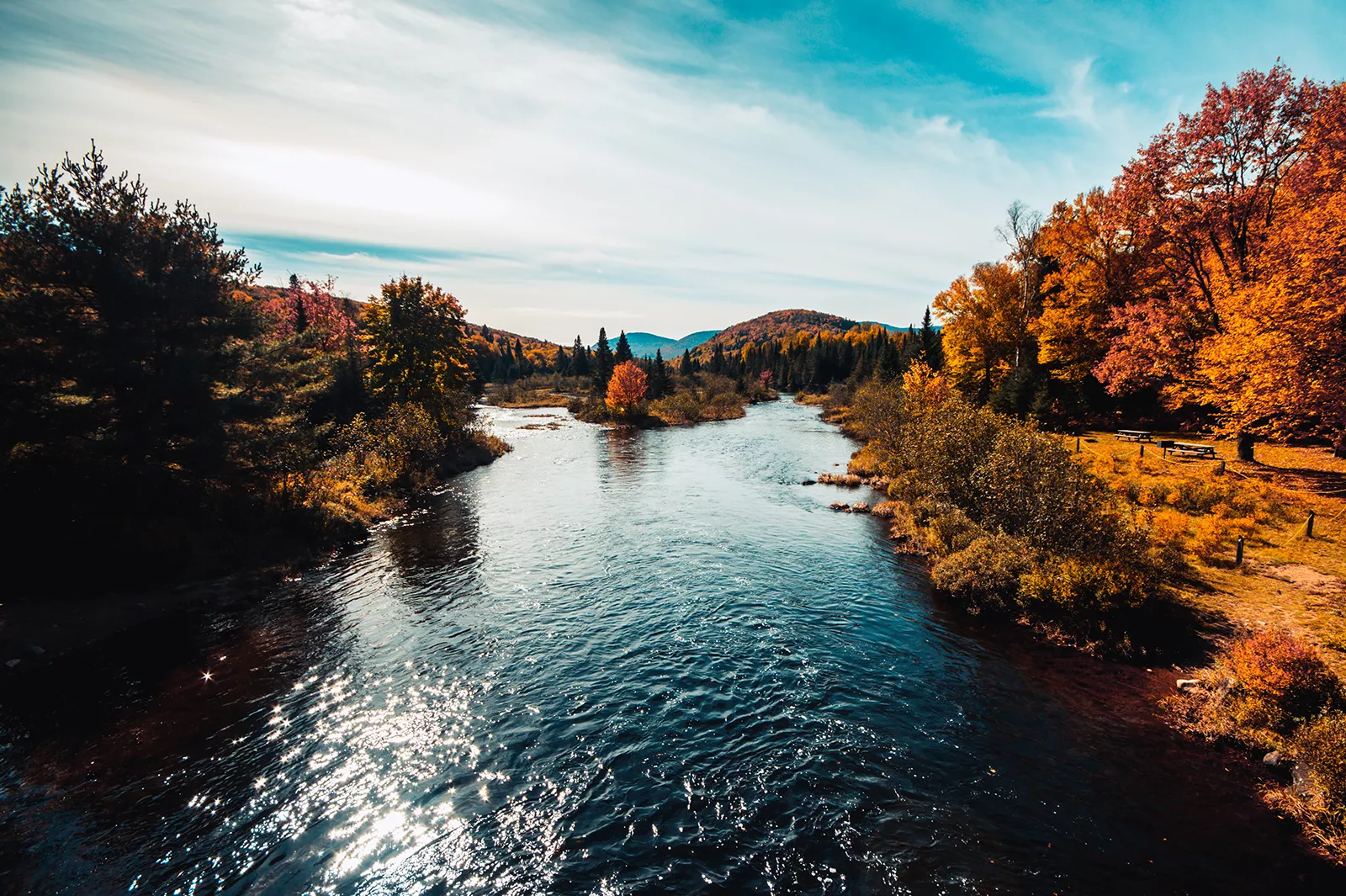
Mont-Tremblant National Park is a destination that beckons nature lovers, adventure seekers, and those in search of tranquility. Its vast and diverse landscapes, with a harmonious blend of mountains, lakes, and rivers, offer endless possibilities for exploration and discovery. Whether you choose to embark on a leisurely hike, push your limits on a challenging trail, indulge in water sports, or simply find solace in the embrace of nature, this remarkable park promises an experience that will stay etched in your heart forever. Mont-Tremblant National Park is a testament to the importance of preserving our natural heritage, allowing us to connect with the beauty and serenity of the wilderness. So, lace up your boots, pack your bags, and venture into this enchanting wilderness—where adventure, serenity, and unforgettable moments await at every turn.
Mont-Tremblant National Park Trails
During the summer season, Mont-Tremblant National Park unveils a tapestry of trails that wind through its breathtaking landscapes. With 11 trails of varying lengths and difficulties, hikers of all abilities can embark on unforgettable journeys. Lace up your hiking boots, grab your backpack, and set off on an expedition to discover the highest points of the Laurentians. Traverse the well-maintained trails that meander through lush forests, offering glimpses of vibrant flora and fauna along the way.
Here are some of the best hikes in the park that you can enjoy during your next trip:
Grand Brûlé to Pic White Trail:
Grand Brûlé to Pic White Trail is one of the most popular hikes in Mont-Tremblant National Park, offering a rewarding 11.6 km (7.2 mi) round-trip adventure. This trail is quite challenging, and takes you to many scenic viewpoints along the way. These viewpoints overlook Lac-Monroe and provide stunning vistas of the surrounding region.
The Grand Brûlé section of the trail, known for its steep inclines and challenging climbs, leads intrepid explorers through dense forests and over rocky outcrops, rewarding them with glimpses of cascading waterfalls and panoramic vistas along the way. As hikers ascend towards Pic White, the trail unveils its true magnificence, exposing jagged peaks piercing the sky and vast valleys blanketed with wildflowers.

La Chute-du-Diable Trail:
For a shorter hike suitable for the whole family, La Chute-du-Diable Trail is a must-visit at Mont-Tremblant National Park. This trail is approximately 1.4 km (0.9 mi) long and takes you on a quick out-and-back adventure to see the accessible La Chute-du-Diable waterfall.
The trailhead is located north of the discovery center in the Diable sector. If you have more time, you can combine this hike with a visit to Les Chutes-Croches Trail, located a short drive to the south. This additional trail is about 0.7 km (0.4 mi) long, making it a perfect afternoon excursion.
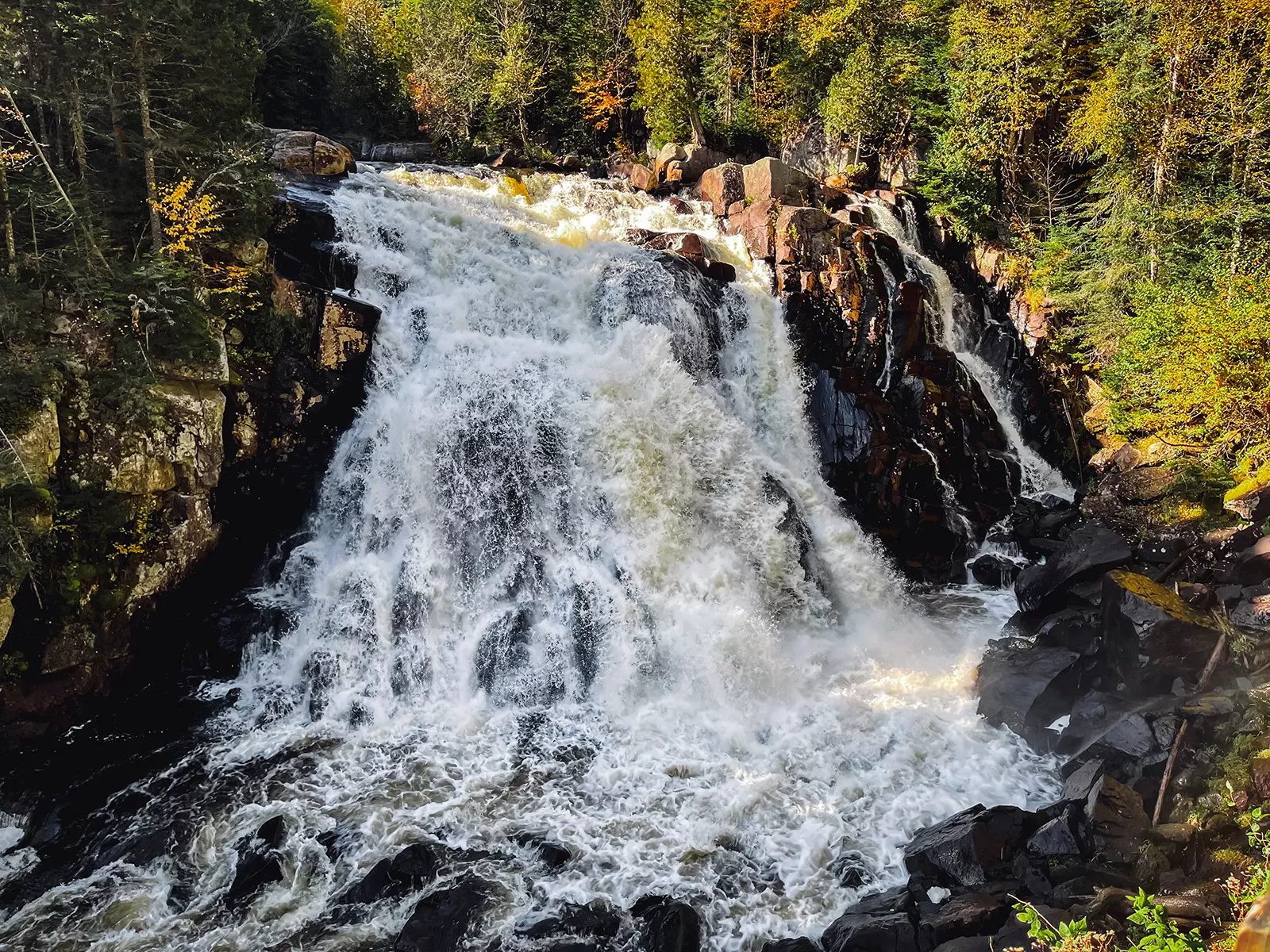
Sommet du Mont Tremblant via Grand Brulé et Les Caps Trail:
For avid peak baggers, the Sommet du Mont Tremblant via Grand Brulé et Les Caps Trail offers an exhilarating challenge not to be missed. This demanding 10.9 km (6.8 mi) hike starts in the village of Mont Tremblant on the Ruisseaux Trail, which serves as a ski slope in winter. You’ll then follow this trail until you reach the Caps Trail, which leads to the Johannsen Trail and the Sommets Trail in Mont-Tremblant National Park.
Throughout the hike, you’ll ascend approximately 638 m (2,096 ft) in elevation, ultimately reaching the highest peak on the Mont Tremblant massif: Pic Johannsen. After conquering Johannsen, you’ll have the opportunity to summit Tremblant before descending via the Grand Brule Trail, which brings you back to the village of Mont Tremblant where you started.
Each of these hikes offers unique experiences and breathtaking views of Mont-Tremblant National Park’s natural beauty. Whether you prefer a leisurely stroll or a challenging adventure, Mont-Tremblant National Park has something to satisfy every hiker’s appetite. Lace up your boots, grab your backpack, and embark on a memorable journey through the picturesque trails of this remarkable park.

What’s Nearby Mont-Tremblant National Park
Nestled in the heart of the Laurentian Mountains, Mont-Tremblant National Park enjoys a strategic location with several nearby attractions and destinations to explore. Just a short drive away is the vibrant town of Mont Tremblant, known for its charming European-inspired village and renowned ski resort. The town offers a wide range of amenities, including restaurants, cafes, boutique shops, and cultural events, providing visitors with a delightful blend of outdoor adventure and urban comforts. Additionally, the region boasts other natural wonders, such as the breathtaking Mont Tremblant Ski Resort, where visitors can experience exhilarating skiing and snowboarding during the winter months. The area is also dotted with picturesque lakes, including Lake Tremblant and Lake Mercier, offering opportunities for boating, swimming, and lakeside picnics. For those seeking a dose of culture, nearby Saint-Jovite features art galleries, museums, and historical sites that showcase the region’s heritage. With its close proximity to these attractions, Mont-Tremblant National Park serves as an ideal gateway to explore the natural and cultural treasures of the Laurentians.
Another option worth considering is a visit to the charming city of Montreal, which is conveniently located nearby. There, you can explore a variety of fascinating attractions, including the renowned Montreal Botanical Garden, the breathtaking Notre-Dame Basilica of Montreal, the captivating Montreal Biodome, and the historic Old Montreal city. These sites promise to provide you with a memorable and enriching experience.

Mont-Tremblant National Park Parking Information
Getting to Mont-Tremblant National Park is relatively straightforward by car:
From Montreal: Take Highway 15 North until you reach Sainte-Agathe-des-Monts. From there, follow Route 117 North until you reach the park’s entrance.
From Ottawa: Take Highway 50 East until you reach Montebello. From there, follow Route 323 North until you reach Mont-Tremblant National Park.
There are also multiple public transportation options if you’re traveling to Mont-Tremblant National Park from Québec City or Montreal.
Once you arrive at Mont-Tremblant National Park, follow the signs and directions to the appropriate entrance. The park has several access points, including the La Diable, Pimbina, and L’Assomption sectors. Each sector provides different amenities and access to various trails and activities, so it’s worth researching which one aligns with your interests and plans.
When visiting Mont-Tremblant National Park, there are designated parking areas available at various locations within the park. The specific parking options may vary depending on the sector or entrance you choose to access.
If you have specific questions or concerns about parking, directions, road conditions, or any specific guidelines or restrictions it’s advisable to check the Mont-Tremblant National Park’s official website or contact their visitor center for the most accurate and up-to-date information including any associated fees.



